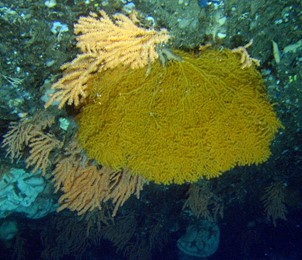Norwegian Fjords
 The northeastern Atlantic, especially around Norway, has some of the most extensive deep sea coral reefs in the world, and some of the shallowest because of their extensive fjord systems. As ocean water is pushed into the fjord, the deep water is squeezed into the shallows, providing suitable conditions for deep sea animals at very shallow depths. The shallowest known Lophelia comes from the Trondheim Fjord in Norway at 39 m. As these fjords are more sheltered than the offshore reefs, we can sample them all year round. This enabled us to study the reproductive cycles in great detail and describe the early life history stages of this important species. At the moment we are studying the tolerance of coral larvae to different temperatures, pH/CO2 levels and levels of sediment and drilling mud concentrations. Drilling mud is a byproduct of the oil industry, which is very important to the Norwegian economy. Using these accessible populations of corals will allow us to understand more about the effects of human activities in other locations where the same corals occur.
The northeastern Atlantic, especially around Norway, has some of the most extensive deep sea coral reefs in the world, and some of the shallowest because of their extensive fjord systems. As ocean water is pushed into the fjord, the deep water is squeezed into the shallows, providing suitable conditions for deep sea animals at very shallow depths. The shallowest known Lophelia comes from the Trondheim Fjord in Norway at 39 m. As these fjords are more sheltered than the offshore reefs, we can sample them all year round. This enabled us to study the reproductive cycles in great detail and describe the early life history stages of this important species. At the moment we are studying the tolerance of coral larvae to different temperatures, pH/CO2 levels and levels of sediment and drilling mud concentrations. Drilling mud is a byproduct of the oil industry, which is very important to the Norwegian economy. Using these accessible populations of corals will allow us to understand more about the effects of human activities in other locations where the same corals occur.

